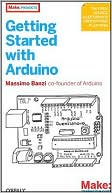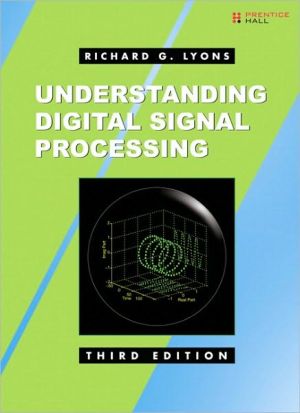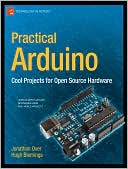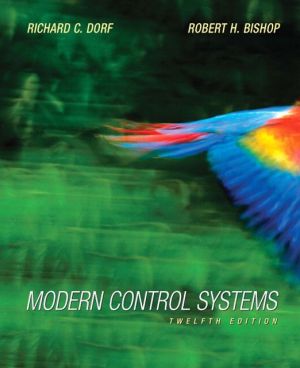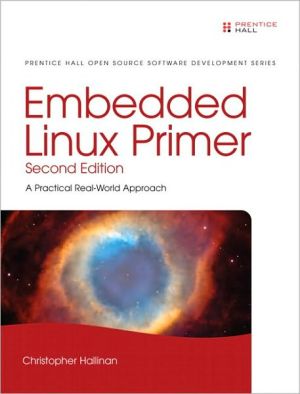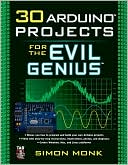OrCad PSpice for Windows, Volume 1: DC and AC Circuits
A circuit simulation book that addresses PSpice for Windows! Using a careful step-by-step process, this book takes readers from a simple dc circuit with its customary current and voltage measurements, through a damped resonant circuit requiring rise time to characteristics, to a complex analog/digital circuit that demands sophisticated timing and frequency measurements. Multi-level activities, examples, and exercises allow users to draw circuits directly on the screen, exactly as they would...
Search in google:
A circuit simulation book that addresses PSpice for Windows! Using a careful step-by-step process, this book takes readers from a simple dc circuit with its customary current and voltage measurements, through a damped resonant circuit requiring rise time to characteristics, to a complex analog/digital circuit that demands sophisticated timing and frequency measurements. Multi-level activities, examples, and exercises allow users to draw circuits directly on the screen, exactly as they would to create initial designs. It also enables them to analyze the circuits using PSpice,—and shows the circuit displayed at a level of detail unavailable through conventional techniques. This book also includes instruction in advanced techniques such as Monte Carlo and Performance. For instruction in DC/AC and devices, operational amplifiers, digital, analog, and filter design. n. Booknews This is the first book (in this case, books) on PSpice circuit simulation, covering both PSpice techniques and DC/AC theory and applications for technology students with little or no experience in circuit simulation. Material is based on OrCAD Lite 9.2, the latest free evaluation version of OrCAD Corporation's PSpice. Since most activities can be done by either PSpice simulation or hands-on construction, the book is designed to replace a conventional DC/AC laboratory manual. Use of a mouse is the only computer skill required. This third edition increases coverage of DC/AC electronics from nine to 19 chapters. The author is affiliated with Mission College. Annotation c. Book News, Inc., Portland, OR (booknews.com)
Preface\ We know what we are,\ but know not what we may be.\ WILLIAM SHAKESPEARE, HAMLET (1600)\ OrCAD® PSpice® for Windows, Volume I is the first in a three-volume series on PSpice circuit simulation and covers DC/AC theory and applications, (Volume II covers Devices, Circuits, and Operational Amplifiers and Volume III covers Digital and Data Communications). The material is based on OrCAD Lite 9.2, the latest free evaluation version of the most popular simulation software on the market today: OrCAD Corporation's PSpice. It is introductory in nature and is appropriate for those with little or no experience in circuit simulation. The level of difficulty is tailored to the technology student, but it offers enough "gentle" material for the technician and enough challenging material for the engineer. It covers both PSpice techniques and DC/AC theory and applications, and the choice and sequence of material closely follows that of a conventional theory text on DC/AC principles. Since most activities can be done by either PSpice simulation or hands-on construction, it is designed to replace a conventional DC/AC laboratory manual. Why PSpice?\ As a dedicated student or educator, you may strongly believe that circuit simulation must be a part of your classroom experience before applying your knowledge and skills on the job. Would it not be reasonable to seek out the most popular circuit simulation software on the market today? Would it not be highly beneficial to use the identical software package that is used by engineers and technicians on the job—complete withprofessional-level advanced techniques and restricted only by circuit size? Would it not also be sensible to reduce your costs to zero, and to distribute the free software without regard for licenses or copyright restrictions? The solution, then, is PSpice.\ Each chapter follows a deliberate step-by-step approach, with new material building on old and each activity supported with numerous circuits, tables, and graphs. Each chapter starts with a brief Discussion section that is designed to supplement and reinforce a theory text. A Simulation Practice section follows with one or more specific experimental activities that can be performed using either PSpice circuit simulation or hands-on with conventional parts and instruments.\ Scattered throughout the text are a number of Simulation Notes, designed to clarify, summarize, and reinforce the more vital PSpice techniques. Should you forget a previously learned PSpice technique, simply locate the corresponding simulation note (with the help of Appendix A) and review the process. Having copies of various simulation notes in front of you during circuit analysis might also prove to be helpful. OrCAD's Total Solution\ For designing electronic circuits, OrCAD offers a total solution package, including schematic entry, FPGA synthesis, digital, analog, mixed-signal simulation, and printed circuit board layout—everything from start to finish. All software components are fully integrated and are designed to follow an engineer's natural design flow.\ From this complete and comprehensive package, this text is based exclusively on just one aspect: PSpice A/D. PSpice A/D simulates nearly any mix of analog and digital circuits and conveniently displays the results in graphical form—exactly what we need to support most curricula typically found in technology and engineering programs. It is powerful, easy to learn, and simple to use. Quite simply, OrCAD's PSpice A/D is one of the best learning tools to come along in many years. OrCAD Lite\ Fortunately, for those of us in education, OrCAD Corporation has made PSpice evaluation software available at no cost. All the activities in this book are based on OrCAD Lite version 9.2. Its only major limitation is the number of symbols and components that can be placed on the schematic. Because our circuits are limited in size, we can adjust easily to these restrictions, and for the most part they will be completely invisible. Third Edition\ Volume I of this third edition offers greatly expanded coverage of DC/AC electronics—from 9 to 19 chapters. There are new chapters on the DC theorems, inductance, capacitance, RLC circuits, power and energy, and filters. Even several of the special features offered by PSpice have been brought forward. Those who are used to the second edition will find a familiar format and writing style.\ The available component parts—from resistors to RAM—are similar to those of the second edition (version 7.1). However, a greatly improved project manager window facilitates schematic organization, assignment of simulation type, and analysis and display of the circuit response. Suggestion\ Although circuit simulation is the major design and development tool of the future, we recommend that the reader also receive hands-on experience by prototyping actual circuits and troubleshooting with conventional instruments. One computer-saving approach is to divide a class into two or more groups and switch between PSpice and hands-on. It is especially instructive to perform the same activity using both PSpice and hands-on techniques, and then compare the two approaches. In this regard, most of the experimental activities outlined in this text can be performed using either PSpice or conventional hands-on techniques. Prerequisites\ Besides a strong desire to learn and the ability to perform simple mathematical operations, the only prerequisite needed is a cursory knowledge of Windows. If you have ever used a mouse, you are probably ready to proceed. If you have no previous experience with Windows, we have found that a brief half-hour summary and practice will provide sufficient background to begin the activities. Further Study\ If you order the complete set of manuals that comes with PSpice A/D, you would be confronted with more than one thousand pages of data, instructions, and reference material. Clearly, all the information contained within those pages cannot be placed into this introductory text series. Instead, we have included only the most vital and commonly used features of PSpice. For a comprehensive description of all the features of PSpice, refer to the complete set of manuals from OrCAD.\ Product manuals and many other useful items and features, including technical data, articles, techtips, and university support, can be obtained from OrCAD Corporation's website (www.orcad.com). Mouse Conventions\ Throughout this text, we will adopt the following mouse convention:\ \ CLICKL or BOLD PRINT (click left once) to select an item.\ DCLICKL (double click left) to perform an action.\ CLICKR (click right once) to open a menu.\ CLICKLH (click left, hold down, and move mouse) to drag a selected item. Release left button when placed.\ \ Acknowledgments \ I wish to express my sincere gratitude to production editor Rex Davidson and acquisitions editor Scott Sambucci of Prentice Hall. Under their careful guidance, the project steadily .moved forward and was released on time. I also thank the reviewers of the manuscript: Ed Bertnolli, University of North Florida; John Brews, University of Arizona; and Ronald Rockland, New Jersey Institute of Technology.\ Of course, OrCAD Corporation deserves special credit for making the OrCAD Lite evaluation disk available at no cost. Their foresight makes it possible for colleges and universities to teach circuit simulation at the professional level without breaking the ever-shrinking budget.\ Thank you for adopting OrCAD PSpice for Windows; May you have good luck and success.\ Roy W. Goody
VOLUME I: I. DC CIRCUITS. 1. Introduction to Capture—Ohm's law and Bias Point Analysis. 2. Series/Parallel DC Circuits—Multiple Schematics. 3. Voltage Source Theorems—Thevenin's, Mesh, and Superposition. 4. Current Source Theorems—Norton's, Nodal, and Superposition. 5. The DC Sweep Mode—Linearity and Markers. 6. DC Sweep Options—Power Transfer. II. AC Circuits. 7. AC Resistance—The Transient Mode. 8. AC Inductance—Transformers. 9. AC Capacitance—Troubleshooting Circuits. 10. RLC Circuits-Impedance. 11. Power and Energy—Power Factor. 12. The Frequency Domain—The AC Sweep Mode. 13. Complex Numbers—Rectangular and Polar. 14. Series Resonance—An Analog Computer. 15. Parametric mode—Family of Curves. 16. RC Time Constant—Rise Time. 17. Filters—Multiple Output Screens. III. SPECIAL PROCESSES. 18. Device Models—Temperature Coefficient. 19. Harmonic Distortion—Fourier Analysis. Appendix A: Simulation Notes Summary. Appendix B: Axis and Grid Control. Appendix C: Data Sheets. Index.
\ This is the first book (in this case, books) on PSpice circuit simulation, covering both PSpice techniques and DC/AC theory and applications for technology students with little or no experience in circuit simulation. Material is based on OrCAD Lite 9.2, the latest free evaluation version of OrCAD Corporation's PSpice. Since most activities can be done by either PSpice simulation or hands-on construction, the book is designed to replace a conventional DC/AC laboratory manual. Use of a mouse is the only computer skill required. This third edition increases coverage of DC/AC electronics from nine to 19 chapters. The author is affiliated with Mission College. Annotation c. Book News, Inc., Portland, OR (booknews.com)\ \

